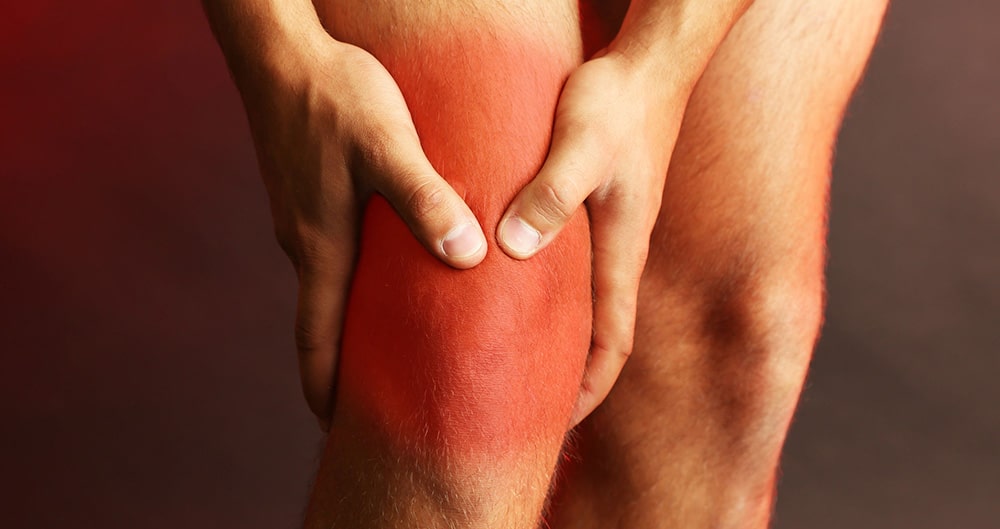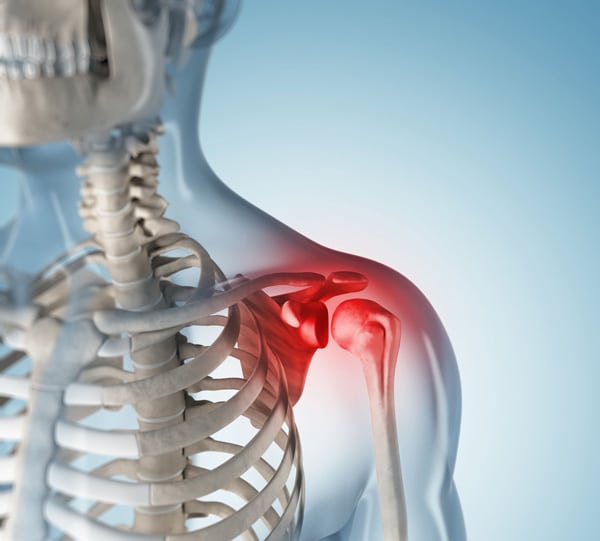Bursitis occurs when a bursa (the fluid-filled sacs that cushion your joints, bones, and tendons) becomes swollen or inflamed. Healthy bursae create a smooth transition for joints when you move. However, when bursitis hits, movements that were once effortless and unobtrusive become difficult and painful. Bursitis most commonly occurs in shoulders, elbows, knees, and hips, but also shows up in the Achilles tendon and tailbone areas. This is because bursitis is typically caused by excessive use of or pressure on a certain joint. It can also be the result of traumatic injury, arthritis, or infection.

Schedule Your Appointment
What are the Symptoms of Bursitis?
If you are suffering from bursitis, you will likely experience the following in the affected area:
- Pain and tenderness to the touch
- Stiffness or achiness when moving
- Redness, swelling, and increased body temperature around joint, bone, or muscle
These symptoms might worsen following use of the affected joint. For many people, bursitis will be noticeable–the joint may appear incredibly swollen or like there’s a large lump under their skin. If the pain becomes sharp, disabling, lasts for several weeks, or is accompanied by a fever, it’s wise to consult with a doctor. This may indicate a bursa infection that will warrant more specialized treatment or antibiotics. Surgery is very rarely needed.

How is Bursitis Treated?
If no infection is present, a physician may recommend a combination of rest, ice, anti-inflammatory medicine, and physical therapy. Since this condition is typically caused by overuse of a certain joint, physical therapy may follow the period of rest, ice, and elevation.
A physical therapist can assist with bursitis treatment in several ways, including:
- Muscle massage to relieve pain in the affected area
- Providing a deep-heat ultrasound to relieve some of the pain
- Recommending exercises to gently build strength and increase mobility in the afflicted area, especially once the initial pain has been alleviated
After swelling, pain, or fluid retention in the area has ceased, much of the treatment for bursitis will involve making certain lifestyle changes in order to prevent another episode. Your physical therapist may give you a list of exercises or stretches to continue doing at home. He or she may also suggest smaller alterations to protect your joints, like wearing better shoes, sleeping with a pillow between knees, avoiding putting pressure on elbows and shoulders, etc. Treatment and prevention work will vary depending on the location and severity of one’s bursitis.
If you’re looking for physical therapy for bursitis in Schertz, TX, you’ve come to the right place! The staff at BioMotion Physical Therapy has years of training and experience in bursitis treatment. If you have additional questions or are ready to get started, give us a call at 210-659-4333.

